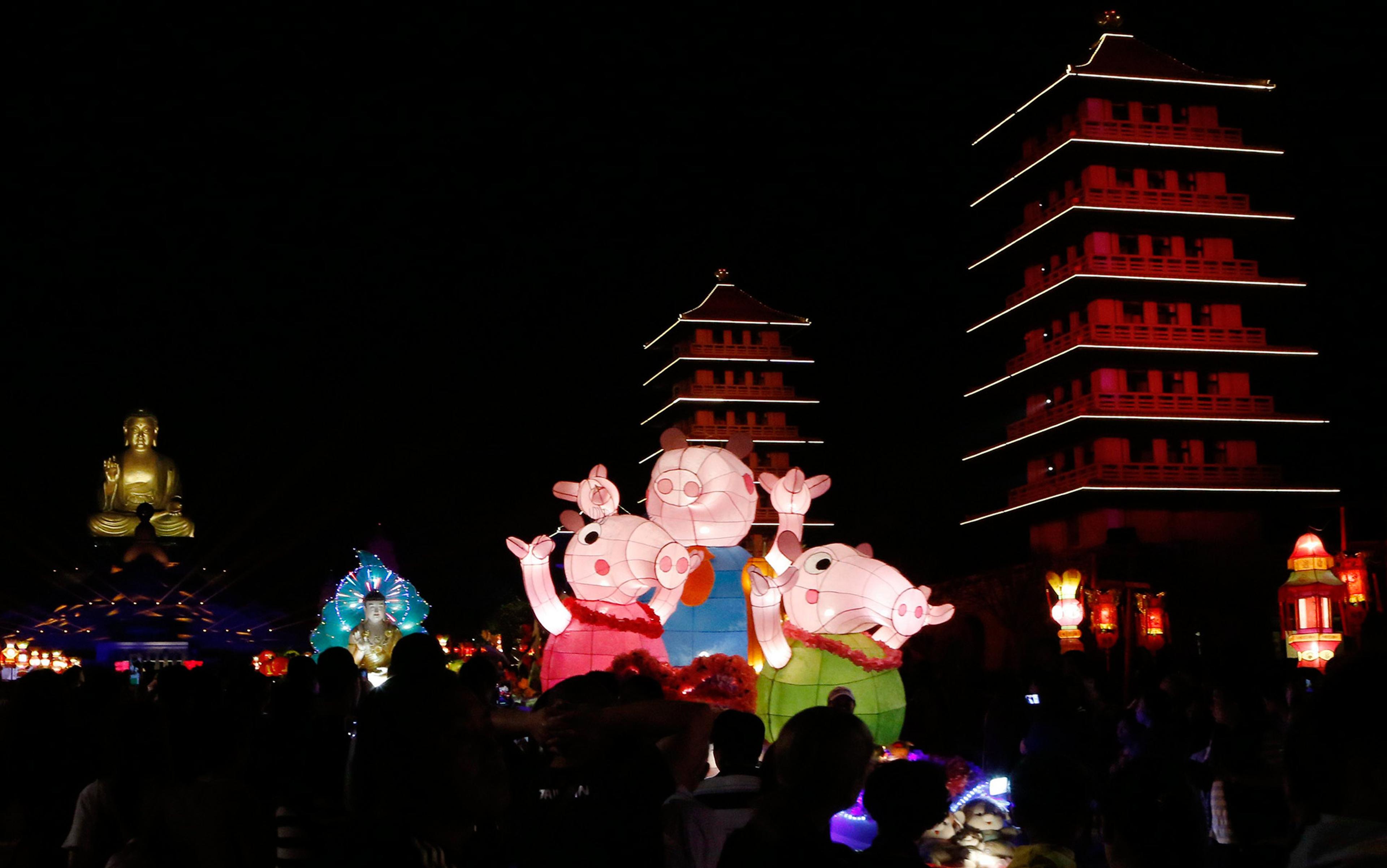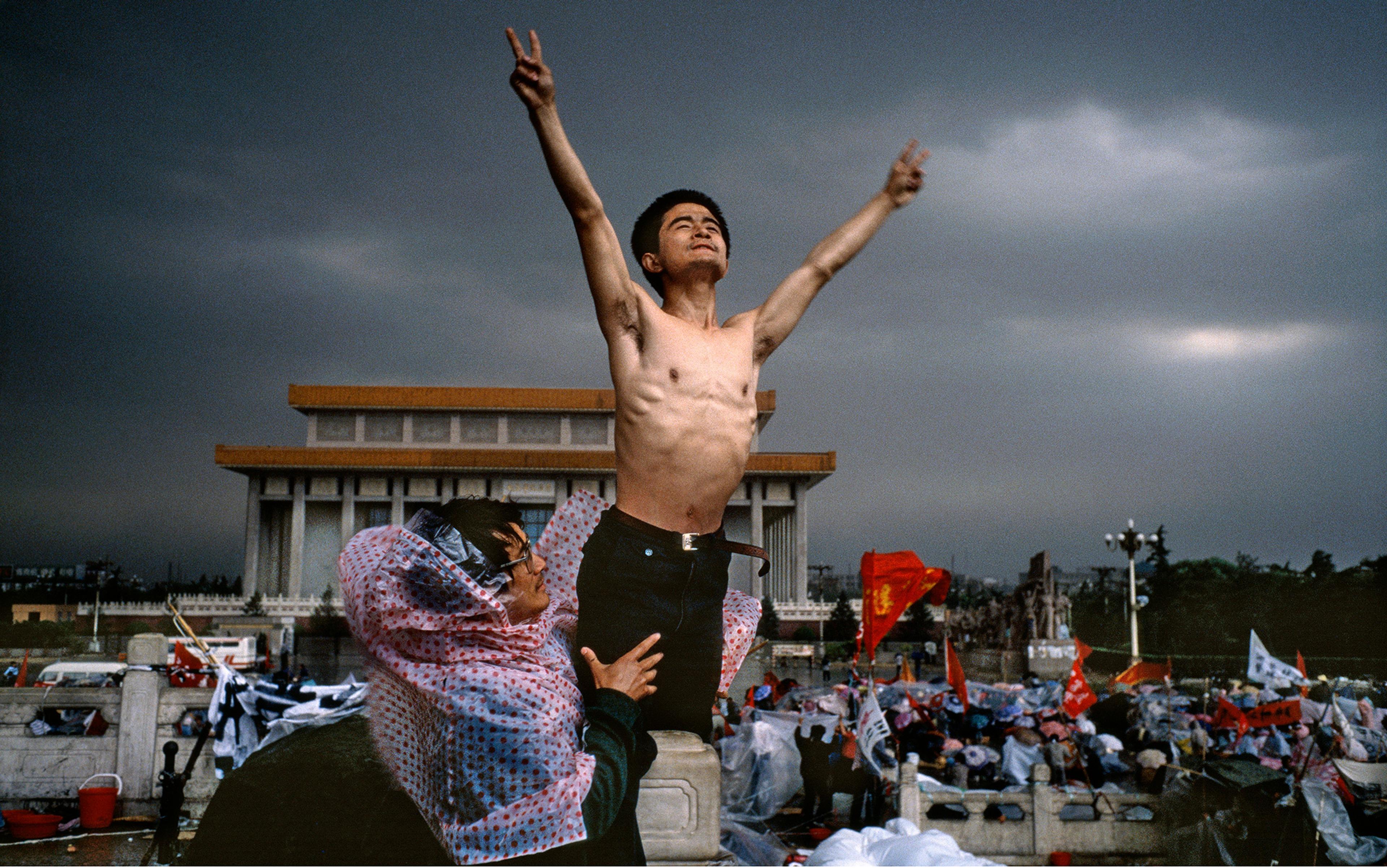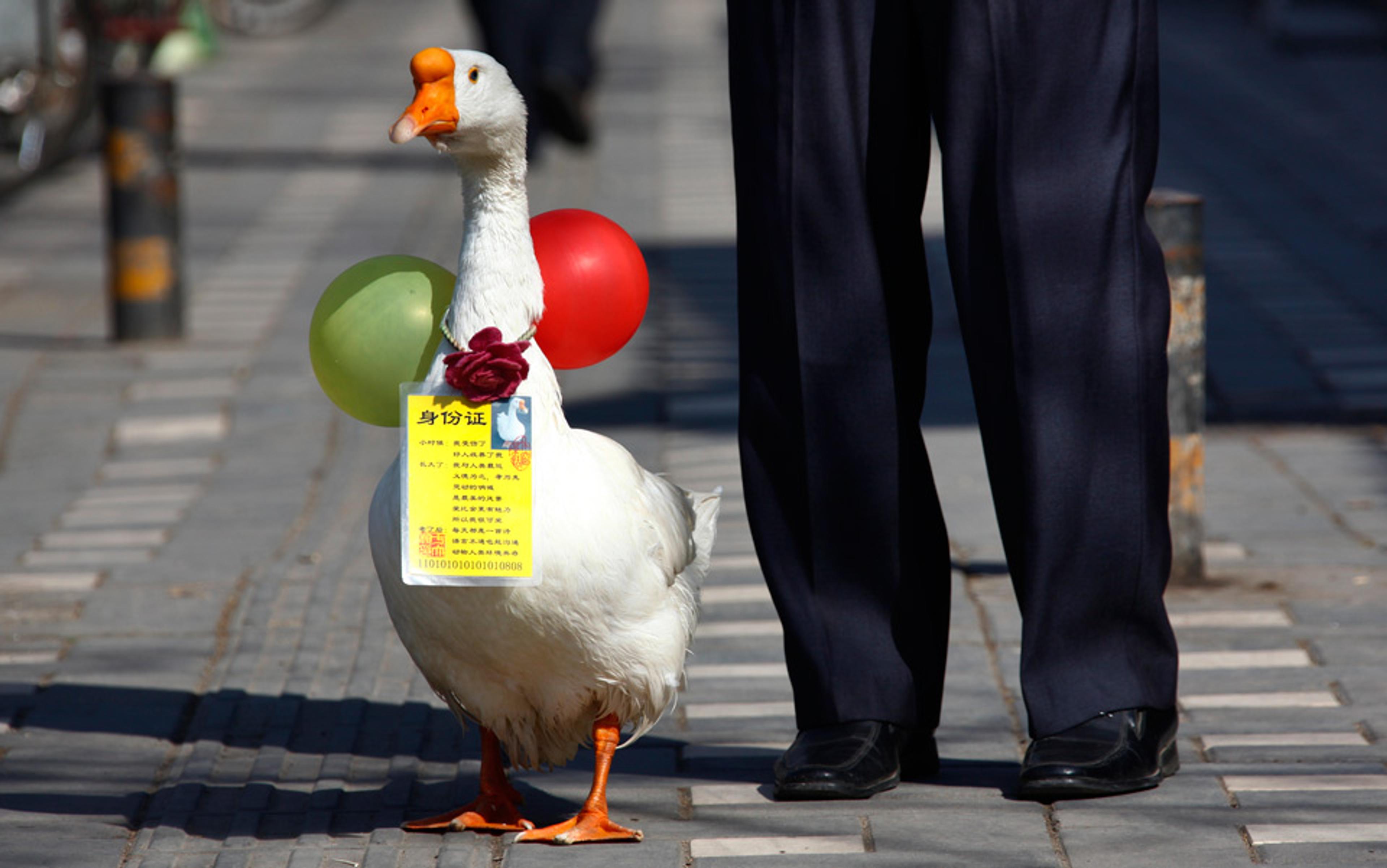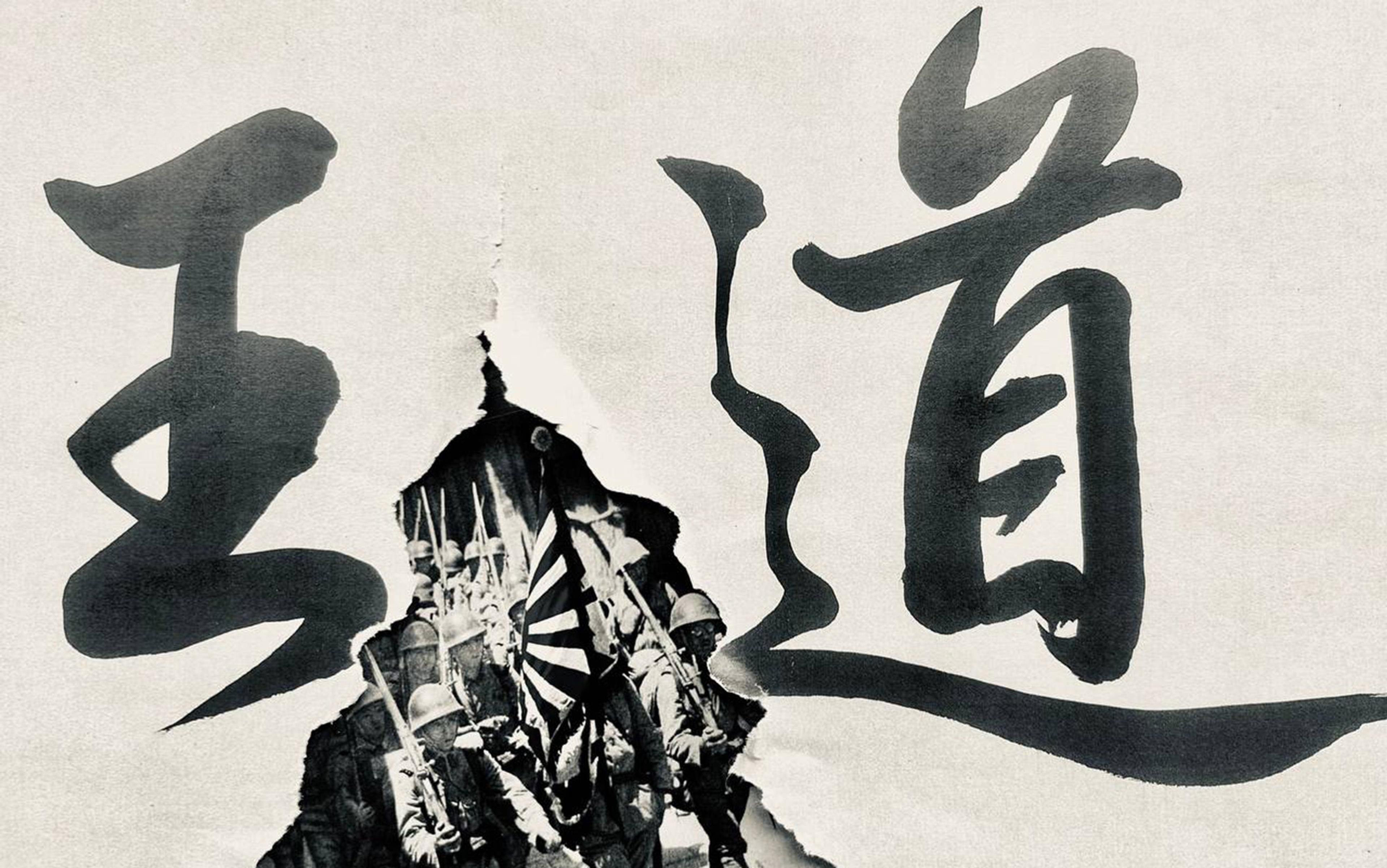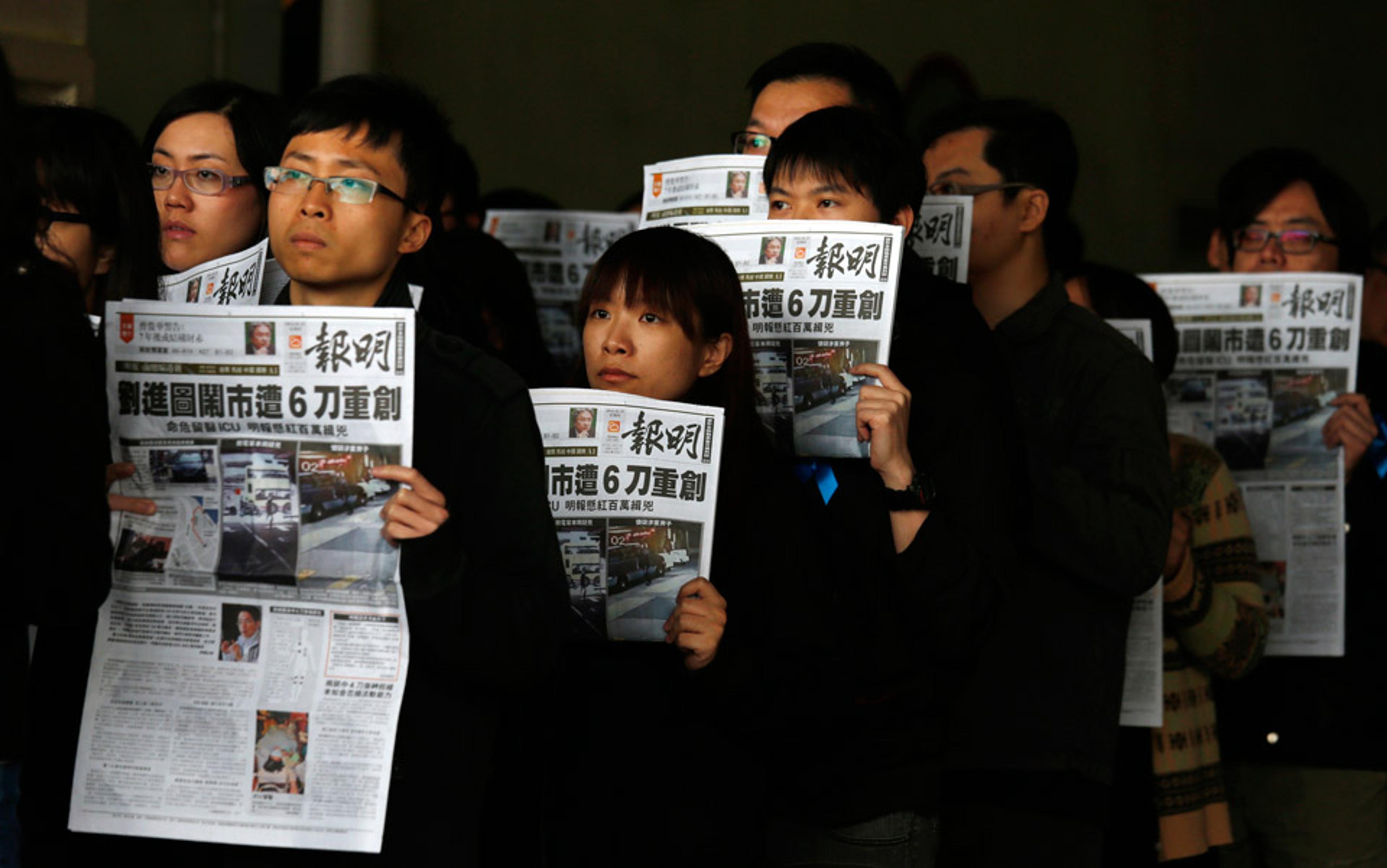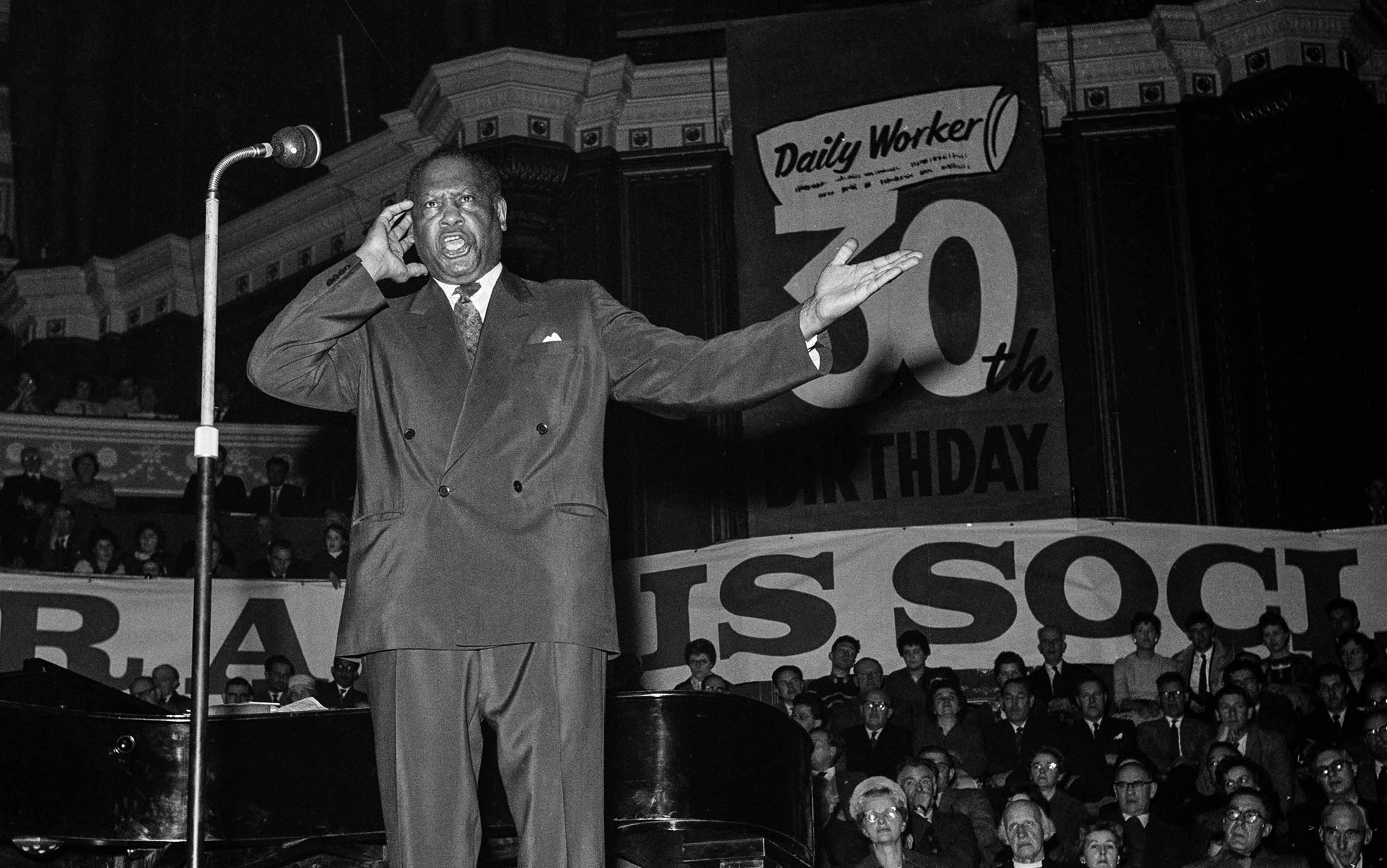The dominant image of China in the West is of a closed, dark place; a country where what reigns supreme is an authoritarianism based on an ancient imperial past that today’s leaders claim to have renounced, while simultaneously extolling China’s 5,000-year history. It’s not a wholly false perception, but the notion of China as a fortress state, impervious to foreign influence, is something of a smokescreen. So too – as the opposite but equally flawed assumption goes – is the perception of China as forever on the brink of being Westernised by the liberalising forces of globalisation and the free market, as if, whenever the fortress gates are opened, the country were barely capable of withstanding the influx of ‘contaminating’ or ‘corrupting’ ideas. This idea of China received a powerful boost from Francis Fukuyama’s ‘End of History’ fantasy that the civilised world would converge around liberal democratic norms, leading many Western observers to believe that China’s economic boom and flirtation with freemarket forces was both inevitable, and would transform it completely.
In reality, China’s longstanding suspicion of foreign influence has not prevented the government or the people from becoming remarkably adept at marshalling the flow of overseas cultural touchstones into the country’s borders, remoulding them into something that isn’t entirely Chinese, but is also totally different from its original form.
Western readers will likely appreciate that China is modernising, becoming more tightly entwined with international fashions and lifestyles, while also maintaining its distinctiveness, particularly in political terms. Still, the specific ways that new sorts of personal freedoms and patterns of consumption coexist with continued – indeed, ramped-up – authoritarianism can be baffling. Consider, for example, Kentucky Fried Chicken. With nearly 6,000 branches in China, KFC is by far the most successful foreign fast-food brand. Fried chicken appeals from Chicago to Shanghai, while the friendly elderly patriarch icon resonates with Confucian traditions, hence the proliferation of Chinese-looking Colonel Sanders knock-offs locally.
But while KFC stays out of politics in the West, in China it recently launched an advertising campaign to celebrate 40 years of Deng Xiaoping’s economic reform, using Chinese icons such as the pop singer Lu Han to promote KFC’s appreciation of the government’s economic record. In the inland urban centre of Changsha, where Mao Zedong spent much of his youth, KFC rebranded an entire branch in honour of another homegrown hero, Lei Feng, a Communist martyr. The Lei Feng KFC is flanked by commemorative statues, decorated with his portraits, and plays a looped soundtrack of his Communist poetry.
Like authoritarian leaders everywhere, China’s are anxious about the population’s interaction with foreign ideas, and the state tries to police this closely, adapting cultural imports to fit national and regional needs. Still, the various ways that the government, villagers and city dwellers of different social classes and generations handle these mutations demonstrate that Chinese concepts of national identity are much more flexible than first impressions suggest. Appreciating this is especially important now, as tensions between China and the United States rise. A strident form of Chinese nationalism is gaining ground. Meanwhile, across the Pacific, influential figures in Washington, DC are dusting off Samuel Huntington’s dangerous and misleading notion of a ‘clash of civilisations’, which first gained traction in 1989, after the end of the Cold War, and is predicated on parts of the world being utterly distinctive rather than porous and continually influencing one another.
This year marks the centenary of the May Fourth movement – an anti-autocratic, anti-imperialist student-led struggle that erupted in Beijing on 4 May 1919 and spread to other cities, just as the European philosophy of Marxism was attracting the interest of young Chinese in thrall to the Bolsheviks’ triumph in Russia. May Fourth activists helped to found the Chinese Communist Party (CCP) in 1921, and called for an end to traditional notions of Confucianism, claiming that China should look to foreign ideas – liberal democracy, science, anarchism and anti-imperialist revolution – if the country was to succeed.
One May Fourth veteran was Mao Zedong. In what later turned out to be a typical example of China turning a foreign idea on its head, from the mid-1920s on, and in the face of Karl Marx’s belief that peasants were reactionary by nature, Mao claimed that the CCP’s best hope lay in unleashing the radical fervour of poor villagers. This partial Sinification during the Party’s rise was followed by a different sort, under Mao’s successor Deng Xiaoping. When allowing a greater role for market forces in China, Deng declared an age of ‘socialism with Chinese characteristics’.
Today, China’s leadership is bent on making Marxism popular with young people once again. Marx’s 200th birthday saw the propaganda department release a romantic cartoon, with anime elements, celebrating his life as a dashing young man. Meanwhile, real-life student Marxists, who in the past year have staged protests about the rights of factory workers in Shenzhen, have been arrested and disappeared. They are guilty of challenging the ruling party’s orthodoxy, the details of which, though always described as ‘Marxist’, are continually shifting. CCP leaders have, for example, long promoted mass movements and celebrated class struggle, but in recent decades, especially under the order-obsessed Xi Jinping (a self-professed fan of both Marx and Confucius) the orthodox line downplays class struggle and emphasises themes of ‘harmony’ linked to Confucianism – the very ideology that Mao’s cohort sought to banish by embracing Marxism.
‘Capitalism with Chinese characteristics’ is where Western products get ingested and spat out in mutated forms
The treatment of this particular imported idea is especially fraught in the anniversary year of the massacre of 4 June 1989. Perhaps the CCP has noted the similarity of the recently detained student Marxists to the activists of 30 years ago and the May Fourth heroes of 1919? A common misconception about the 1989 protestors is that they were just as anti-Communist as their eastern European counterparts who brought down the Berlin Wall. In fact, they sought not to topple the CCP but see it return to its avowed roots.
The international literature on Mao’s rise to power, and the Communist state he led from 1949 to 1976, offers many examples of the same all-or-nothing understandings of Chinese culture in play. Karl Wittfogel’s essay ‘The Influence of Leninism-Stalinism on China’ (1951) ticks off all the ways that the CCP ‘follows Soviet procedure’ and accepted ‘ideas and directives’ from Moscow; while in The New Emperors: China in the Era of Mao and Deng (1992), the US foreign correspondent Harrison Salisbury presents the first two major leaders of the People’s Republic of China as espousing new ideas while stepping into a distinctively Chinese imperial model with roots in practices going back millennia. Salisbury’s take updated the notion that, when raiders from north of the Great Wall, such as the Manchu founders of the Qing, conquered China, they simply assumed the trappings and rituals of previous Chinese dynasties. In reality, the story of both Qing times and the post-1949 era are much more complicated.
Recent scholarly work on China’s last dynasty – such as The Manchu Way (2002) by Mark Elliott at Harvard, and works discussed in the essay ‘The New Qing History’ (2004) by Joanna Waley-Cohen at New York University – argues that Manchu influences reshaped politics below the Great Wall. When the Qing’s founders took control from the ethnically Han Chinese Ming Dynasty that preceded them, they brought features of the northeastern frontier culture with them, while integrating themselves into a pre-existing political system. The result was a mixed system of rulership, symbolised, for example, by the Manchu and Chinese languages each having political roles. Similarly, in recent years, ‘capitalism with Chinese characteristics’ has made China a place where Western cultural products get ingested and spat out in mutated forms. Now, as in the Qing era, Chinese culture is more the result of transmuted foreign ideas mixed with local strains than the nationalistic leadership, with its warnings of Western culture’s pulling power, cares to recognise.
Even so, these days the popularity of Western influences, not least Western festivals in China still generates heated debates online. In a local variant on the sorts of culture wars that Americans have grown used to in recent years, defenders of Confucian ways tend to argue – as did a group of 10 conservative scholars from different universities in a joint letter from 2010 – that celebrating holidays such as Christmas, even in secular ways, threaten ‘Chinese values’, and that ‘traditional rituals’ need to be protected. Urban 20-somethings and older cosmopolitan-minded intellectuals who have spent time abroad counter that young Chinese people celebrating Christmas and Valentine’s Day is nothing to worry about. It is possible, they say, to enjoy Santa Claus – who in China is curiously portrayed playing a saxophone – while also respecting indigenous traditions. These might include honouring familial ancestors on Qingming – a spring day set aside for sweeping graves as a filial act – and celebrating the country’s political milestones, such as the 1 July anniversary of the CCP’s founding.
What these debaters mistakenly take for granted is that the line between types of holidays is clear: Western festivals in one category, and Chinese ones in the other. The reality is murkier, and more interesting.
International Women’s Day has been marked across the globe each year on 8 March, and in China since 1922, arriving from a place that is not quite East but also not quite West: Russia. The Soviet Union adopted the holiday (which originated in America) as a celebration of women’s labour rights and, originally, both the CCP and the Nationalist Party celebrated 8 March in China in the Soviet tradition. But when the anti-Communist Chiang Kai-shek became leader of the Nationalist Party, after the death of its more progressive founder Sun Yat-sen in 1925, he reconfigured the group’s handling of the holiday.
During the Civil War era (1945-49) the Nationalists and the CCP would hold competing 8 March celebrations in cities such as Shanghai. Chiang’s side devoted the day to honouring mujiao (mother’s teaching), a traditional notion of women in the home to raise children to be filial, while the CCP, now under Mao’s leadership, continued to stress themes of equality. Once the PRC was founded in 1949, 8 March was installed as a regular part of the political calendar, and celebrated only in CCP style across the mainland. All this fit in with Mao’s quote that ‘women hold up half the sky’ and his lifelong dislike of Confucian notions of women’s separate and subordinate roles within the family system. Mao’s first published essays included a newspaper series about how badly women fared in traditional family structures, and one of the first legal reforms his government introduced after taking power in 1949 was a New Marriage Law that made husbands and wives equal in matters such as divorce.
On 8 March, one pizza chain offered women a 50 per cent discount – but only on salads
By the late 20th century, things shifted again. The post-Mao CCP began to view Confucian ideals as compatible with, rather than antithetical to, communism, and Women’s Day celebrations underwent another iteration. Decade by decade, 8 March editorials in official publications and state-sponsored rituals put more emphasis on traditional values, and gave less attention to ideas of gender equality, to the point that CCP celebrations now have much more in common with the Nationalist ones of the 1940s than the respective Communist ones. Modern-day feminists have recently attempted to re-inject a radical angle into 8 March, and refocus it on feminist struggle, but their move has been treated as subverting the holiday’s purpose, and the activists involved have sometimes been arrested and accused of Western bourgeois feminist ideas, despite in some ways trying to return the holiday to what it meant in earlier periods of Chinese history.
The result is that 8 March remains a major calendar date in China, even if Mao would barely recognise how it is celebrated. Women get no credit for holding up half the sky, but they do get half a day off work, and many companies organise special perks such as spa days or afternoon teas for their female staff. Businesses flock to the marketing opportunity: one chain of pizza restaurants in Beijing this year offered women a 50 per cent discount – only on salads. The idea is to put women on an old-fashioned pedestal, and sometimes it is referred to as ‘Goddess Day’, further removing it from its roots in struggles for rights. It should by now be clear that irrespective of whether we look at fast food, ideology, festivals or pop culture, the cultural transmission of something ‘foreign’ into China is a contested and nuanced process. But it is the specificity of the process that needs examining if we are to truly understand globalisation.
Thomas Friedman’s New York Times columns and bestselling books have probably done more than any other to promote the misleading idea of a culturally flattened-out world. Friedman often refers to the Big Mac as a flat-world symbol – a Big Mac is a Big Mac is a Big Mac, wherever it shows up. But, in China, the growing popularity of McDonald’s tells another story.
There are now more than 2,000 Golden Arches across China, mainly in the cities and clustered along the prosperous east coast. Many outlets offer localised menu items that would seem bizarre to an average American: burgers made with mantou, a Chinese steamed bread, or deserts made with red-bean paste, a popular Chinese delicacy that many foreigners baulk at. However, McDonald’s in China is protean in other ways. In urban hubs such as Beijing and Shanghai, McDonald’s offers an affordable snack for the white-collar worker: a double cheeseburger costs 23 RMB ($3.33/£2.61). It is not a place to get a whole meal, as it is in the West, nor does it have the same plebeian fast-food connotations.
In smaller cities, McDonald’s represents a higher level of sophistication than in the capital. Not only is the price point more unrealistic, but the American branding is also more exotic (‘Who eats a whole meal with their hands?’ ask Chinese people moving to the city when they see their first McDonald’s). It is also aspirational, in a climate where imported goods are seen as a luxury, and sometimes an oddity. Ordering up an occasional Filet-o-Fish in a blasé manner can, for young Chinese professionals in Suzhou, be a marker of urbane sophistication, just as ordering a cappuccino once was for office workers in Southampton. In university areas, McDonald’s takes on another meaning altogether: a romantic date spot for young lovers. None of these identities can be ascribed to McDonald’s in the West.
In a country as large and diverse as China, perhaps it is unsurprising that McDonald’s has a range of meanings. But the judicious and fragmentary Sinification, as determined by the brand executives, compared with the organic, consumer-led mutations across the country, highlights the differing, sometimes competing cultural forces at play in China. Any US brand trying to do business in a country plagued with anxiety about Western ideas has to grapple with this fraught local environment.
During the nonviolent protests in and around Tiananmen Square in 1989, one way that the government justified using armed troops was to claim that some ‘black hand’ intellectuals (such as the future Nobel Peace Prize laureate Liu Xiaobo) had infected impressionable youths with the virus of dangerous Western liberal ideas. It was feared that those students in turn would spread this disease to other social groups, creating the conditions for a ‘counterrevolutionary’ riot that could send the country spiralling into chaos. Today, the CCP acts on this suspicion by trying to control which materials get into the country, sometimes banning things outright, sometimes doctoring whatever does enter to reflect Party values and ‘traditional’ Chinese mores. For example, Bohemian Rhapsody (2018) was one of 34 foreign films allowed to be released in China this year, only with all of its LGBT content excised. Last year, The Shape of Water (2017) was photoshopped by the censors, adding a black dress to Sally Hawkins’s nude form to preserve her modesty.
China is not alone in censoring foreign media in the name of sexual mores; and while liberal Westerners might disapprove of such prudishness, it is at least comprehensible in the Western framework of how art is consumed in different parts of the world. But this understanding does not tell the whole story because, in China, it is not just that Western culture has to be tempered for a domestic audience: it is that cultural imports are re-appropriated from their original meanings by both top-down and bottom-up forces, giving them a new life of their own.
The state-run Global Times denounced Peppa Pig as ‘an unexpected cultural icon of gangster subculture in China’
Consider Peppa Pig. These days, the animated piglet is probably more recognisable in China than in her home country, the UK. For the uninitiated, Peppa’s cartoon exploits have been broadcast as five-minute animations for British pre-schoolers since 2004. In one typical episode, Peppa, her little brother and their pig parents fly a kite in the park: that is the full extent of the plot. In 2015, Peppa arrived in China and was particularly popular among small children trying to learn English. Season Five of her adventures has been viewed more than 14 billion times in China.
Yet Peppa took on a new life that her British creators and Chinese broadcasters could never have predicted. She became a cult icon among millennials, some of whom sported temporary Peppa tattoos, leading the state-run Global Times newspaper to denounce her as ‘an unexpected cultural icon of shehuiren [slang for ‘gangster’] subculture in China’. No sooner was Peppa co-opted by China’s youth than she disappeared from the videosharing platform Douyin. Merely by dint of attracting the wrong audience, she became a pariah of ‘gangster values’, which would surprise anyone in Britain familiar with the original show. Of course, the crackdown only boosted her fame. Merchandise, often now ironically depicting her as an actual gangster, soared in popularity. Not least, parents still wanted her to teach their children English.
Unable to stymie the tide of Peppa fandom, the government allowed Alibaba Pictures to co-produce a feature-length Peppa Pig movie, released this year to celebrate the Year of the Pig. The trailer is instructive: it features a rural grandfather who makes a Peppa Pig toy to bring to his grandson in the city at Chinese New Year. It might as well be a trailer for traditional Chinese values, with its filial piety and journeys from the rural to the urban. Shedding her gangster trappings, Peppa has been reborn as an emblem of a Chinese ideal – and of the government’s determination to take charge of cultural flows.
Nor has China’s anxiety about gangsters abated. In early 2018, censors banned ‘actors with tattoos’ and ‘hip-hop culture’ from being broadcast, referring to it as ‘tasteless, vulgar and obscene’. The hip-hop ban surprised many fans, as the most popular television show of 2017 was The Rap of China, a reality TV contest made by the videostreaming company iQiyi, and viewed 1.3 billion times in its first month alone. Chinese hip hop has long been a thriving subculture, but The Rap of China brought the genre mainstream for the first time, in a manner that veteran rappers decried as sanitised and inauthentic. Meanwhile, the censors prickled at what they saw as the inherently oppositional ethos of rap, and the show’s stars were reprimanded for previous work that celebrated drugs or misogyny.
Today, Chinese hip hop is one of the country’s most notable cultural exports. The ban seems to have loosened, even if the most famous stars are nowhere near as ubiquitous as they were in 2017. The New Yorker in 2018 profiled Higher Brothers, the most famous Chinese rap band, whose style is indebted to the genre’s Western hip-hop origins, but whose lyrics focus on uniquely Chinese concerns in songs such as WeChat and Made in China.
Though they might not seem like natural bedfellows, there are similarities between Marxism and hip hop’s roads into China. Both were foreign ideas that garnered a domestic fandom, while also inspiring a local, homegrown movement that turned the concept into something unique. Just as the CCP promotes Marx with one hand and crushes Marxists with the other, on The Rap of China – a show now obliged to be government-friendly to avoid another ban – last year’s winner was the Uyghur rapper Aire, who hails from a region where the CCP is erasing expressions of ethnic identity via a repressive network of extra-judicial internment camps thought to contain more than 1 million inmates. Thus, foreign culture is permitted, but can be broadcast to the masses only within a tightly controlled government framework while, across the country, grassroots Marxists and underground rappers continue to interpret the ideas on their own terms.
There is no single blueprint for how China will process a Western import. Even products that seem concrete, such as Oscar-winning films, can end up re-purposed by government regulators or the organic forces of fandom. For several decades after China began its period of reform and opening up in the late 1970s, many Westerners felt confident that Chinese identity would be remade by the forces of globalisation and the free market, with Fukuyama and Friedman’s visions complementing statements such as Bill Clinton’s assertion that the CCP’s attempts to control the internet are like trying to ‘nail jello’ to the wall.
His generation has grown up reading Harry Potter novels and watching The Big Bang Theory
In particular, there was a belief that globalisation would take North American culture global. To a certain extent it has – Western products and entertainments are commonplace in China today. But to fully understand this phenomenon and what it reveals about China, that culture must be closely observed. Just as Chinese immigrant culture in the US has become a synthesis of east meets west, the import of foreign culture into China leads to novelties that are truly multicultural creations.
The tension between the domestic and the foreign is not abstract, nor confined purely to the cultural realm. During a Q&A session following a recent event at Harvard commemorating the 30th anniversary of the 1989 massacres, a Chinese exchange student made clear his feeling that the CCP had been right to stop the struggle in its tracks. In his view, even though the protesters insisted that they were patriots trying to make their country’s leaders live up to their professed ideals, what their movement was actually trying to do was make China just like the US.
This young man had made a decision to come to the West to study. He had doubtless grown up like many of his peers reading Harry Potter novels and watching US sitcoms such as The Big Bang Theory. Yet none of this prevented him from being, as his question revealed, a CCP loyalist and Chinese nationalist. Despite the pancultural character of his own life experiences, he was unwilling to accept that those who took to the streets in 1989 wanted China to be more democratic without becoming just like any other foreign place. For him, the imaginative borders of China’s cultural space should and could be fixed. For him, challenging the ruling party’s orthodoxy was tantamount to looking to convert the country wholesale to the ways of another land. And yet, had he a living elderly grandmother, she would have seen Marxism-Leninism transform from a dangerously exotic import into a strand of Chinese tradition, and witnessed the CCP shift from endorsing rowdy anti-Confucian mass movements to celebrating Confucius as a patron saint of social harmony.
The Tiananmen protesters of 1989 sang both The Internationale, a socialist anthem they’d learned in school, and also Nothing to My Name by the anti-conformist rocker Cui Jian. They presented petitions to the authorities in a manner reminiscent of traditional appeals to emperors, yet carried banners quoting American slogans (‘We Shall Overcome’, ‘Give Me Liberty or Give Me Death!’). They spoke of their struggle as a ‘New May Fourth Movement’ and also as an effort to push Deng Xiaoping to be more like the reformist Mikhail Gorbachev. This mixing and matching, and in the process moving to an uncharted course, was something other Chinese generations had done. It is a testament to the power of the stringent patriotic propaganda introduced post-1989, in hopes of avoiding a repetition of the mass upheaval of that year, that the young Chinese man at Harvard could not think of the Tiananmen protesters this way – despite himself belonging to this long line of mix-and-match generations, and likely having an even more eclectic collection of songs on his smartphone than his 20something predecessors might have had on their cassette tapes.
